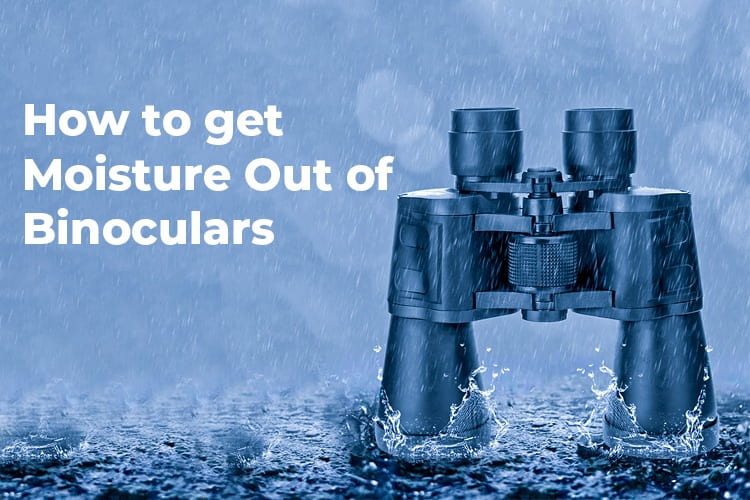How to Get Moisture Out of Binoculars

Who love nature, watching birds, or going on exciting adventures , Binoculars are like treasure for them. Binoculars let us see the world from a new angle and enjoy the beauty of things far away. However, these optical wonders are not invulnerable to the elements. If you find your binoculars fogged up due to moisture, worry not – we have compiled a comprehensive guide to help you restore their clarity and functionality.
Understanding the Enemy: Moisture in Binoculars
Before we jump into how to get rid of the moisture in binoculars, let’s take a quick look at why these binocular buddies sometimes get moisturized. Moisture can enter the binoculars through changes in temperature and humidity, leading to condensation on the internal optical surfaces. This moisture doesn’t just make things hard to see – it can also harm the fragile parts inside your binoculars as time goes on. If you want to keep binoculars from fogging up then the solution will be slightly different. Here we will discuss only how to get moisture out of binoculars.
Prevention is Better Than Cure
Prevention plays a crucial role to minimize the occurrence of moisture-related issues. Always store your binoculars in a cool, dry place when not in use. If you anticipate exposure to varying temperatures, consider using a sealed container or airtight bag to protect them. Additionally, using silica gel packets in your binocular case can help absorb excess moisture.
Myth of Rice
You might have heard that placing your binoculars in a container of rice can help absorb moisture. Using rice to deal with moisture might sound awesome, but there’s a bit of a twist. You see, those tiny rice bits could sneak into the delicate parts of your binoculars. If you opt for this method, ensure that the binoculars are placed in a way that avoids direct contact with the rice.
Gentle Airflow
With a handheld air blower or a can full of squished air, softly blow some air across your binoculars’ surface. Make sure not to blow too forcefully, as this could push moisture further into the device or damage sensitive components. Give this technique a try first to get rid of any moisture on the outside before you start thinking about fixing things inside.
Natural Air Drying
Put your binoculars in a spot with good air circulation where the room isn’t too hot or too cold. This will allow the internal moisture to evaporate naturally. Keep the binoculars away from direct sunlight or sources of heat, as excessive heat can damage the delicate optics. This method will take time so do this with patience.
Desiccants: Your Allies in Moisture Battle
Desiccants are like moisture magnets – they really love water and are often used to keep things nice and dry. Silica gel works as the best desiccants for moisture absorption. Silica gel packets, often found in packaging, can be placed alongside your binoculars in an airtight container. Replace these packets regularly as they become saturated over time.
Warmth and a Silica Gel Bath
For a more intensive moisture removal method, place your binoculars in a sealed bag or container along with silica gel packets. Leave them in a warm, but not hot, location for several hours. The warmth will evaporate the moisture, while the silica gel will absorb it.
Take Expert’s Help
If the moisture persists or if you are uncomfortable attempting any DIY solutions, consider seeking professional assistance. Many camera and optics shops offer cleaning and repair services for binoculars. They know all about taking apart and cleaning binoculars safely, using the right tools. By this you will be assured that your binoculars work as well as they should
Avoid Drastic Measures
Don’t go using too much heat, like using hair dryers or popping your binoculars into the oven. This can really mess up the insides and the special lens parts, and it might be impossible to fix. So, uh, better not do that!
Maintenance for Longevity
Once you’ve managed to get rid of the moisture from your binoculars, make sure to do things to stop it from happening again in the future. Store them in a moisture-controlled environment and periodically inspect them for any signs of condensation. Regularly cleaning the exterior and protecting them from extreme weather conditions will contribute to their longevity.
In the end, tackling moisture in binoculars is a usual issue, but you can manage it with some patience and being careful. You’ve got a few good options: preventing the issue in the first place, using soft air to blow away moisture, trying out those little silica gel packets, or even getting some help from the pros if needed. When you have made moisture out of your binocular, now you are anytime ready. Just attach neck strap properly and explore the world with your loving binocular. Just keep in mind, these cool binocular gadgets can give you amazing sights for a long time if you treat them right. So, no need to be shy about giving them some care and attention – it’s worth it!
